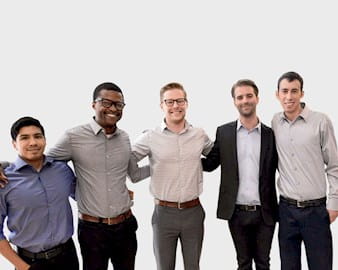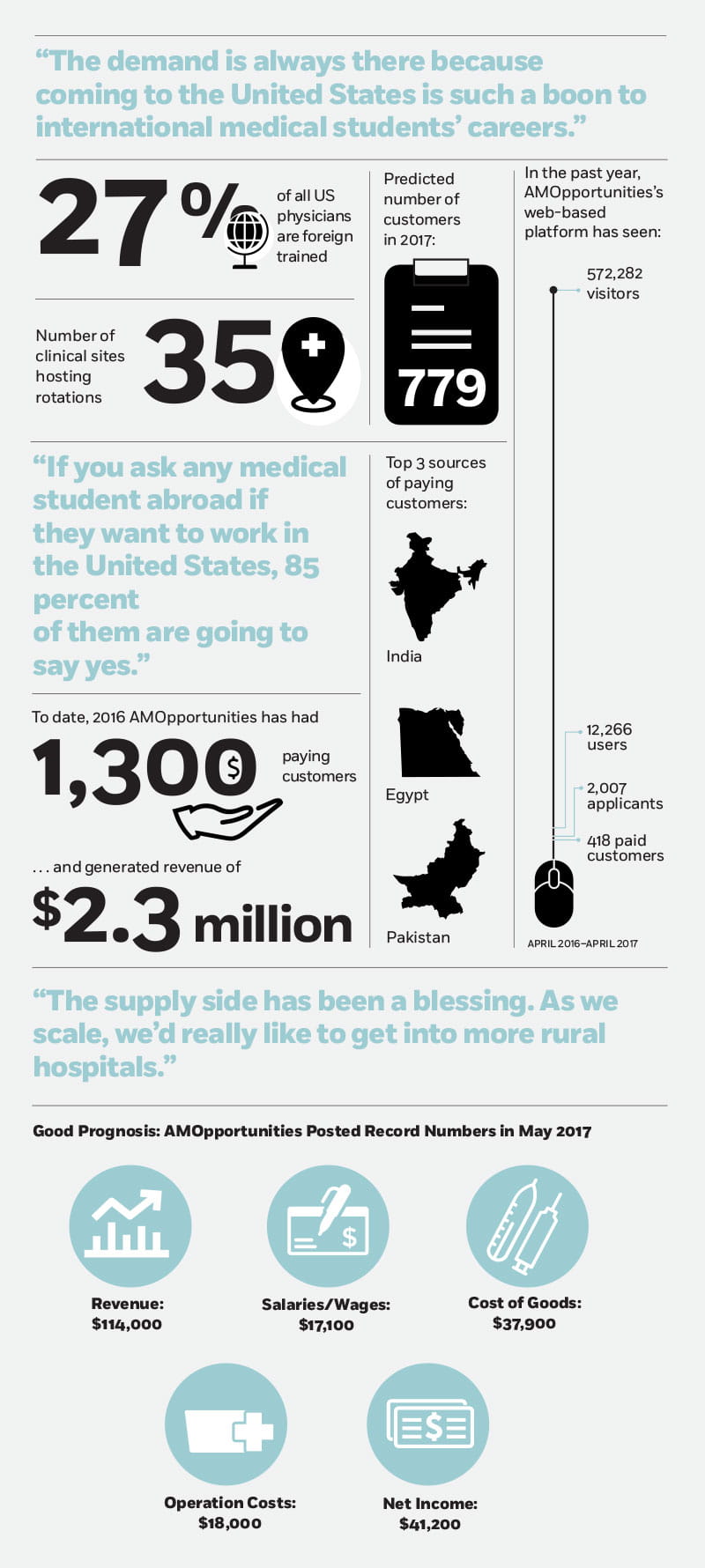
AMOpportunities cofounder and 2017 NVC winner Kyle Swinsky explains how he connects international medical students with US physicians.
- By
- October 10, 2017
- Healthcare

Like any successful entrepreneur, AMOpportunities cofounder and CEO Kyle Swinsky has developed a business that fills a need in an untapped market. In his case, it’s connecting international medical students to rotations in the United States.
Swinsky’s Chicago-based startup is the 2017 winner of the Edward L. Kaplan, ’71, New Venture Challenge. Run by the Polsky Center for Entrepreneurship and Innovation, the New Venture Challenge is one of the top accelerator programs in the country, and the competition this year was stiff. But Swinsky’s business model, which presented an original and profitable solution to a unique demand, pushed Evening MBA student Swinsky and AMOpportunities to the front of the competition.
Founded in 2013, AMOpportunities features a user-friendly platform that connects international medical students to more than 300 educational programs hosted by US-based institutions, hospitals, clinics, and physicians. Prior to AMOpportunities, international students struggled to find the right fit for them. “Every other company that does this lacks the options and information on rotation sites that AMOpportunities provides its customers,” Swinsky said.
Think of it this way: before AMOpportunities, international medical students were like restaurant goers looking for a place to dine in the Yellow Pages. AMOpportunities is its industry’s Yelp. It provides customers with all the information they need to weigh their options and make an informed decision about their rotation placement. And since rotations are an expected cost of medical school, the company had an eager customer base from the start.

“Rotations are a requirement of a medical student’s education,” Swinsky said. “Our customers are doing something they’d have to do anyway, but they’re doing it in the United States instead.” But why spend the time and energy going abroad? For that, Swinsky has an easy answer: “In the international medical field, working or training in the United States leads to higher-paying jobs.” So for students interested in increasing the return on their hefty investment in medical school, studying in the United States presents the perfect opportunity.
One problem many international students face is that they don’t have the ability or the means to search for the right place to travel abroad. Swinsky puts it another way: “They simply don’t have the time or bandwidth to apply to 15 schools and programs.” That’s how AMOpportunities helps: it streamlines a process that, until now, has been an arduous journey wrapped in red tape. “Students want guaranteed access to a quality rotation, and that’s what we give them,” he said.
While the demand side was an obvious win, what wasn’t as clear was how the supply side of things would shake out. “Everyone whom we dealt with going through the NVC was afraid that sourcing the rotations would be difficult, but that wasn’t the case,” Swinsky enthused.
As eager as international students are to learn, US physicians are excited to teach. “We discovered quickly that physicians want to teach students. There’s a real demand for teaching that’s not being fulfilled because physicians aren’t being fully utilized,” Swinsky said. It turns out that hosting students is a boon for medical providers because it brings in additional revenue and allows physicians to sharpen their skills on the job.
With both sides of the equation eager to bite, Swinsky knew he had a winning idea—and so did the NVC judges. As for what he plans to do with the $100,000 cash prize, Swinsky has his eyes on China. “We’ve had zero customers from China because we’ve advertised exclusively through Facebook, but we’re hoping to change that,” he said. And with China sending more international students to the United States than any other country, Swinsky, once again, knows exactly where the demand is.
—By Abigail Covington
